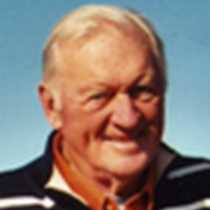Lewiston & Clarkston
A Prelude: In late 1805, the Corps of Discovery passed through today’s Idaho panhandle. At that time, members of the party saw salmon in the Clearwater River (“Koos Koos Kie” in Nez Perce), a sure sign they were on target to find the Western Sea. On today’s date – October 26th – the captains surveyed the rapids at The Dalles, Oregon, which William Clark referred to as “the gut.” On the same day, Private Joseph Whitehouse’s journal noted the many native languages on the west side of the Rocky Mountains.
Today’s itinerary exposed National Geographic Sea Bird guests to a pair of adventures: 1) an exploration of Lewis & Clark campsites; and 2) a jet boat trip through the soaring rock walls of Hells Canyon.
The jet boats left Clarkston, Washington on calm water, passing under the blue bridge linking Clarkston, Washington and Lewiston, Idaho over the Snake River. The small town of Asotin (“Place of the Eels”), Washington’s most southeastern community, appeared on the right side. Passengers watched as basalt hills rose on both shores. Wildlife sightings included bighorn sheep, cormorants and several great blue herons. After a stroll through an apple orchard and snacks at Cache Creek hillside ranch, which marks the official entrance to Hells Canyon, guests continued upriver. On the return trip the jet boats stopped to study ancient petroglyphs at Buffalo Eddy, followed by lunch at a river lodge.
Simultaneously, the other guests traveled by motor coach from campsite to campsite along the Lewis & Clark trail. Centerpieces of that expedition included Kamiah (“Place of rope litter”), Saddle Cache, Treaty Council Camp, Canoe Camp, and Heart of the Monster. Tour guide Linwood Laughy, a lifelong resident of Clearwater County, read passages from the captain’s journals and pointed out details of the hills, valleys, and river bottoms likely seen by the Corps.
Both groups met at Lapwai, site of the Nez Perce National Historical Park, and the onetime home of Presbyterian missionaries Eliza and Henry Spalding (1830s-1840s). A film about the Nez Perce people was shown, followed by a tour of site’s splendid museum.
Upon returning to the National Geographic Sea Bird at Clarkston (originally called Jawbone Flats, later Vineland) guests enjoyed a film called “ice Age Floods” after dinner.




